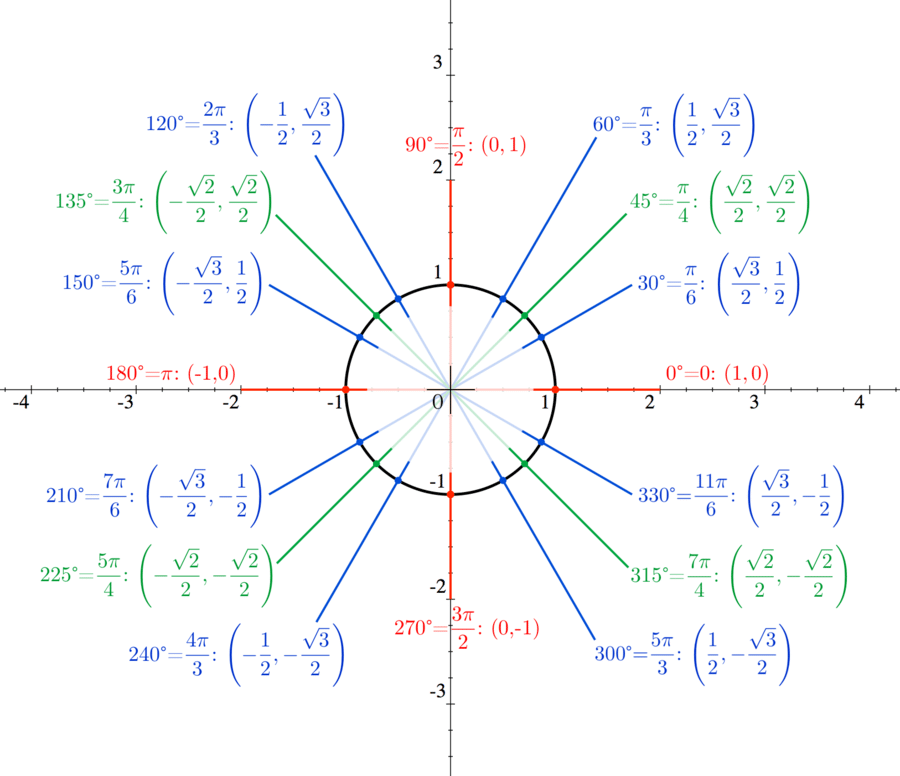
#Iunit circle how to#
How to memorize unit circle in minutes!!.A Trick to Remember Values on The Unit Circle and.If you prefer watching videos 🖥️ to reading 📘, watch one of these two videos explaining how to memorize the unit circle: 2D Direction Vectors. Sine, Cosine, Tangent The measurements of sin, cos, and tan become clear when you see them on a graph. Trigonometric functions on the unit circle (2 C, 67 F) Trigonometric identities (31 F) U Unit circles - complex plane (10 F) Unit circles - rotation (12 F) Units of angle (7 C, 17 F) Media in category 'Unit circles' The following 91 files are in this category, out of 91 total. Well, these special right triangles help us in connecting everything we’ve. The unit circle is algebraically represented using the second-degree equation with two variables x and y. The unit circle is generally represented in the cartesian coordinate plane.
#Iunit circle free#
We won't describe it here, but feel free to check out 3 essential tips on how to remember the unit circle or this WikiHow page. The unit circle is a circle centered on the origin with a unit radius, 1. Unit Circle is nothing more than a circle with a bunch of Special Right Triangles. A unit circle is a circle with a radius measuring 1 unit. The other part - remembering the whole unit circle chart, with sine and cosine values - is a slightly longer process. For any other angle, you can use the formula for angle conversion:Ĭonversion of the unit circle's radians to degrees shouldn't be a problem anymore! 💪 The most important angles are those that you'll use all the time:Īs these angles are very common, try to learn them by heart ❤️. For example the coordinates of a point on.

Certain trigonometric functions are simpler in unit circles. The trigonometric functions of the popular angles. A unit circle is a circle that has a radius of one unit.

Using the formula s r t, s r t, and knowing that r 1, r 1, we see that for a unit circle, s t. To define our trigonometric functions, we begin by drawing a unit circle, a circle centered at the origin with radius 1, as shown in Figure 2.The angle (in radians) that t t intercepts forms an arc of length s. A circle is a closed geometric figure that has no sides or angles. Well, it depends what you want to memorize 🙃 There are two things to remember when it comes to the unit circle:Īngle conversion, so how to change between an angle in degrees and one in terms of π (unit circle radians) and Finding Function Values for the Sine and Cosine. A unit circle is a circle with a unit radius from its name alone.


 0 kommentar(er)
0 kommentar(er)
